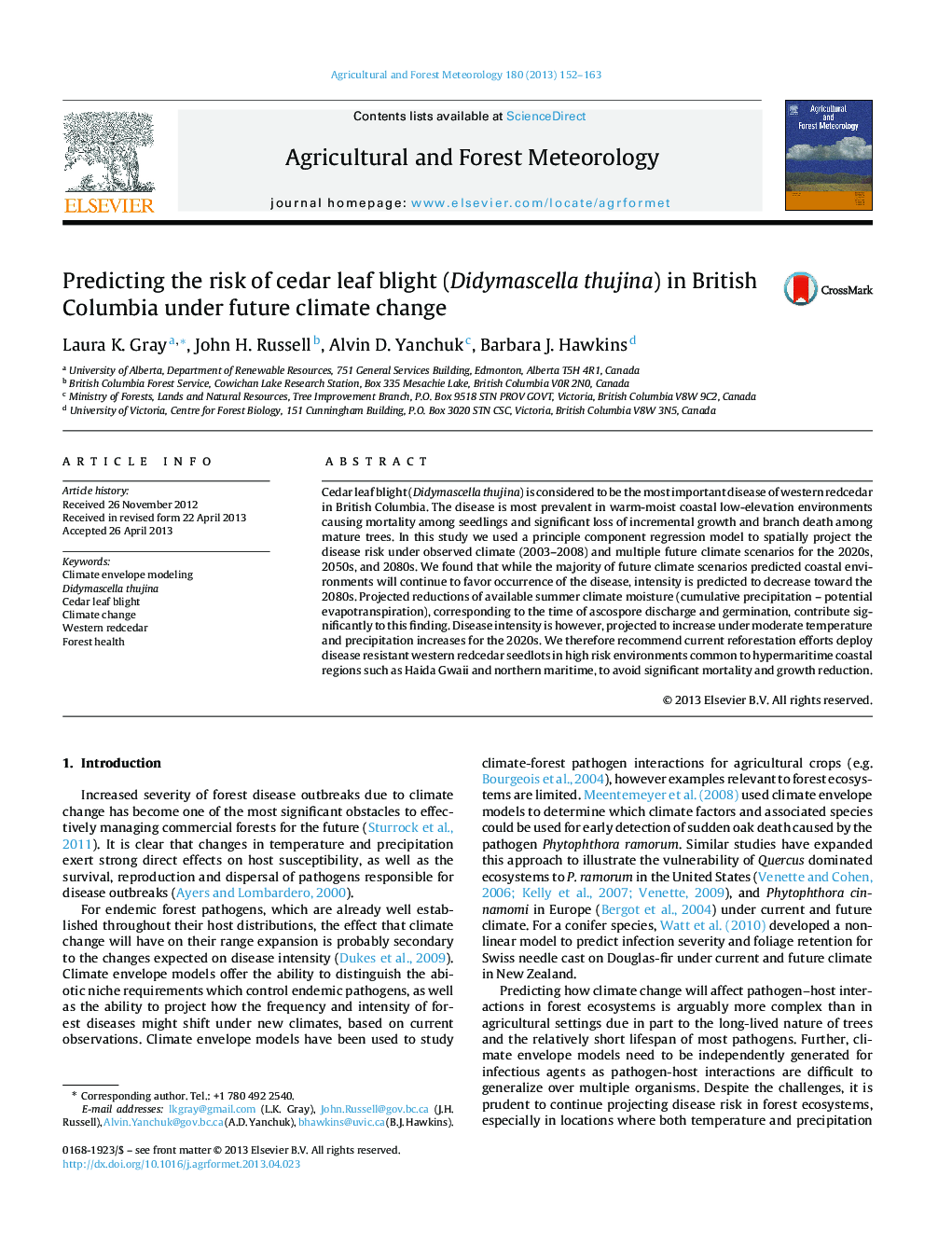| Article ID | Journal | Published Year | Pages | File Type |
|---|---|---|---|---|
| 6537820 | Agricultural and Forest Meteorology | 2013 | 12 Pages |
Abstract
Cedar leaf blight (Didymascella thujina) is considered to be the most important disease of western redcedar in British Columbia. The disease is most prevalent in warm-moist coastal low-elevation environments causing mortality among seedlings and significant loss of incremental growth and branch death among mature trees. In this study we used a principle component regression model to spatially project the disease risk under observed climate (2003-2008) and multiple future climate scenarios for the 2020s, 2050s, and 2080s. We found that while the majority of future climate scenarios predicted coastal environments will continue to favor occurrence of the disease, intensity is predicted to decrease toward the 2080s. Projected reductions of available summer climate moisture (cumulative precipitation - potential evapotranspiration), corresponding to the time of ascospore discharge and germination, contribute significantly to this finding. Disease intensity is however, projected to increase under moderate temperature and precipitation increases for the 2020s. We therefore recommend current reforestation efforts deploy disease resistant western redcedar seedlots in high risk environments common to hypermaritime coastal regions such as Haida Gwaii and northern maritime, to avoid significant mortality and growth reduction.
Related Topics
Physical Sciences and Engineering
Earth and Planetary Sciences
Atmospheric Science
Authors
Laura K. Gray, John H. Russell, Alvin D. Yanchuk, Barbara J. Hawkins,
